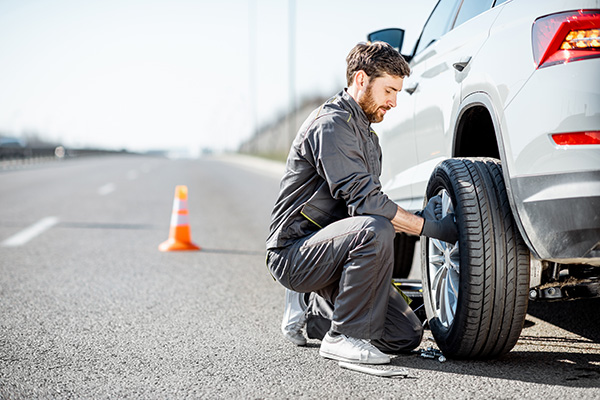
A flat tire can happen at the worst possible time—on your way to work, during a road trip, or even just running errands around town. While calling for roadside assistance is an option, knowing how to change a flat tire yourself can save time and keep you from being stranded. However, safety is the top priority when handling a tire change, especially on the side of the road. Here’s a step-by-step guide to changing a flat tire safely and getting back on the road as soon as possible.
What You Need to Change a Flat Tire
Before you start, make sure you have the right tools in your vehicle. Most cars come with a basic tire-changing kit, but it’s always good to check and ensure everything is in place. Here’s what you’ll need:
- A spare tire (make sure it’s properly inflated)
- A jack to lift the car off the ground
- A lug wrench to remove and tighten the lug nuts
- A wheel wedge or a large rock to keep the car from rolling
- A flashlight if changing the tire at night
- Gloves and a reflective vest for added safety
If your car has locking lug nuts, you’ll also need the special key that came with your vehicle. Keeping these items in your trunk at all times will ensure you’re prepared for a flat tire emergency.
Step-by-Step Guide to Changing a Flat Tire
1. Find a Safe Location
The moment you notice a flat tire, reduce your speed and find a safe, level area to pull over. Avoid stopping in curves, narrow shoulders, or near heavy traffic. If possible, pull into a parking lot or a wide, straight section of road. Turn on your hazard lights to alert other drivers that you’re stopped.
2. Secure Your Vehicle
Before you start, apply the parking brake to prevent the car from rolling. Place wheel wedges behind the tires to keep the vehicle stable, especially if you’re parked on an incline. If you don’t have wheel wedges, a large rock or piece of wood can work in an emergency.
3. Loosen the Lug Nuts
Using the lug wrench, turn the lug nuts counterclockwise to loosen them slightly, but do not remove them yet. Lug nuts can be tight, so you may need to use your body weight or step on the wrench for extra leverage. Doing this before lifting the car prevents the wheel from spinning.
4. Jack Up the Car
Locate the jack point near the flat tire—most cars have designated spots under the frame for safe lifting. Position the jack securely and begin raising the car until the flat tire is about six inches off the ground. Never put any part of your body under the car while it’s lifted.
5. Remove the Flat Tire
Now that the car is lifted, fully unscrew the loosened lug nuts and carefully remove the flat tire. Place it flat on the ground to prevent it from rolling away.
6. Install the Spare Tire
Align the spare tire with the wheel bolts and slide it onto the hub. Hand-tighten the lug nuts as much as possible before lowering the car.
7. Lower the Car and Tighten the Lug Nuts
Slowly lower the car back to the ground using the jack. Once the tire touches the ground, use the lug wrench to fully tighten the lug nuts in a star pattern—this ensures even pressure and prevents wheel wobbling.
8. Double-Check Everything
Make sure all lug nuts are secure, and pack up your tools and flat tire. If you were using hazard lights, turn them off before driving away.
Driving on a Spare Tire
Most spare tires are designed for temporary use and should not be driven on for extended distances. Here are a few important things to keep in mind:
- Check the spare tire’s air pressure before driving. If it’s low, find the nearest gas station to inflate it.
- Drive at moderate speeds—most spare tires aren’t meant for highway speeds and should not exceed 50-55 mph.
- Get your flat tire repaired or replaced as soon as possible. Spare tires have limited tread and are not built for long-term use.
Call for Help When Needed
While changing a tire is a valuable skill, there are times when calling for assistance is the safest option. If you're on a busy highway with no safe place to pull over, it’s best to call for roadside help rather than risking your safety. Similarly, if you don’t have the right tools or the spare tire is flat, a professional can provide the right solution.
If you need tire repair or replacement, we can help ensure your vehicle is safe to drive. Regular tire inspections and maintenance can also reduce the chances of unexpected flats in the future.
Spare tires aren’t meant for long-term use. Visit B&C Auto Center for professional tire services and ensure your car is ready for the road ahead!